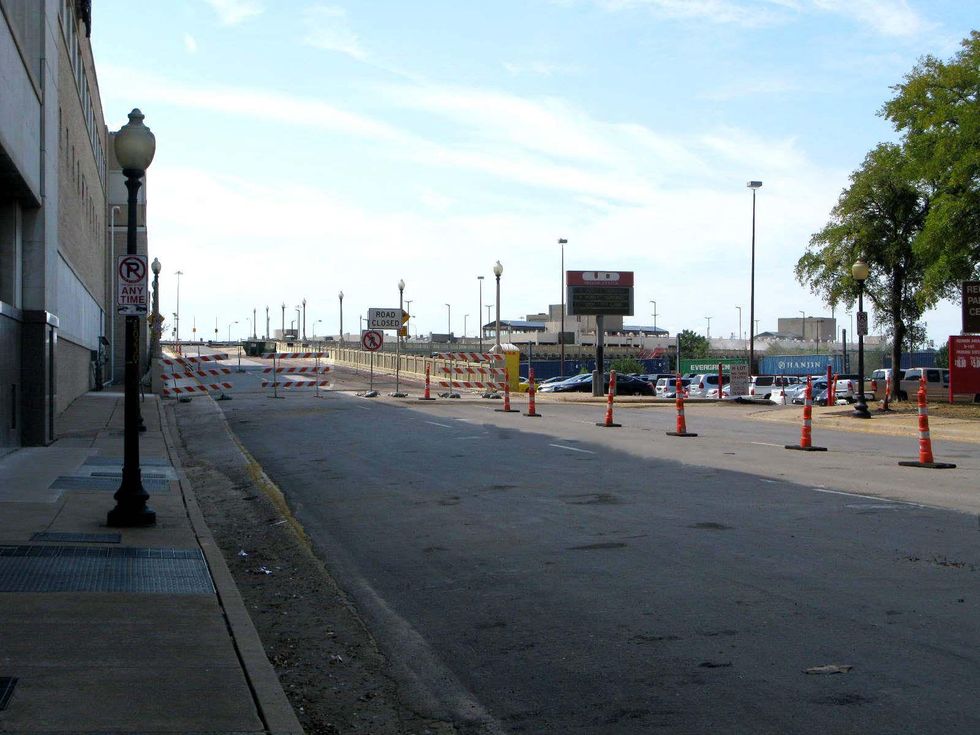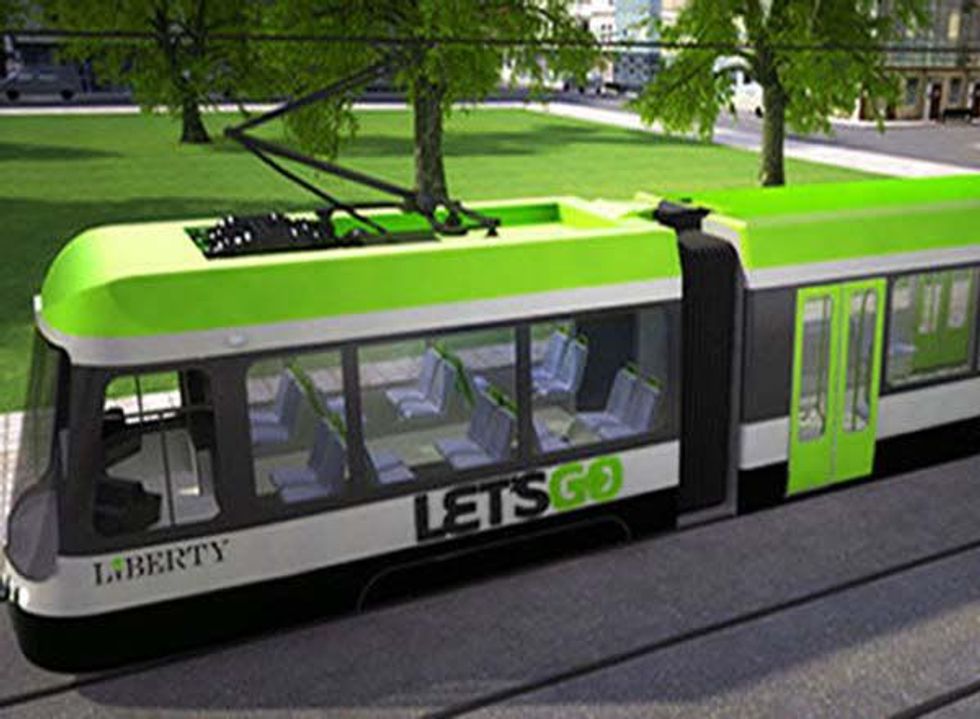Train Ride
Trolley from downtown Dallas to Oak Cliff will do its small part to connect communities
If you like to frequent the Bishop Arts District and you go through downtown Dallas to get there, then your progress has been hampered as of late.
At the Houston Street viaduct, the main thoroughfare, you're greeted by a "road closed" sign and a detour that sends you swerving left. It'll stay like that for months. But many would call it a worthy cause: For the first time since the 1950’s, a trolley line will connect downtown Dallas to Oak Cliff.
The Oak Cliff street car follows the completion of the Margaret Hunt Bridge and the dedication of the Continental Ave Bridge to pedestrian and bike use as another effort to connect communities separated by the Trinity River. Once complete, the trolley line will run between the Dallas Convention Center and Bishop Arts.
While it won't likely persuade Dallas urbanites to ditch their cars, it can be an alternative, says Patrick Kennedy, author of Walkable DFW, a blog about urban planning.
"I see the streetcar as an eventual full-fledged network and transportation alternative," Kennedy says. "Once the various lines get built out, they will link the various neighborhoods within about a 3-mile radius of downtown, to downtown as the hub of the system."
"There is a psychological difference between rail and bus transportation," Jason Roberts says. "Riding the bus has a social stigma that rail transportation does not."
At an estimated cost of $56.8 million, the project will lay a total of 2.3 miles of track and is slated for completion in 2015.
The first 1.6 miles of track will run between Union Station downtown and the intersection of Colorado and Beckley in Oak Cliff. This initial phase of the project is expected to be completed by October 2014.
Construction has been underway for a month. The Houston Street viaduct, the main thoroughfare from downtown to Bishop Arts, is closed, with traffic diverted to the Jefferson Blvd Viaduct, which has been changed from one-way to two-way.
At first glance, it seems hard to justify spending $23 million on a strip of track that will replace the equivalent of four bus stops.
"There is a psychological difference between rail and bus transportation," says Jason Roberts, founder of the Oak Cliff Transit Authority (OCTA) which has been involved with the streetcar project since its grassroots inception. "Riding the bus has a social stigma that rail transportation does not. Investment in rail infrastructure signals a long term commitment by the city to the area and local businesses."
Roberts and the OCTA secured federal funding through the TIGER Grant program, a 2008 stimulus package initiative designed to create jobs through building transportation infrastructure. The Oak Cliff trolley project was granted $23 million in federal funds for the first phase.
The service will be run by DART and is the first of its kind for the city. Two $8 million trolleys will have more in common with DART light-rail trains than the vintage trolleys rumbling down McKinney Ave.
The rest of the funding for an additional .7 miles of track that will extend the route to the convention center and into Bishop Arts comes out to $30.87 million, an amount that was originally intended for a Love Field "people mover" connector. That plan was to build an underground shuttle route between the Burbank light-rail station and the Love Field airport terminal.
The “people mover” was scrapped in favor of a surface-level tram with negligible differences in travel time. The funds for the connector sat untouched until this past January when the Regional Transportation Council reallocated them to Oak Cliff.
Kennedy points to the on-going success of the McKinney Avenue Transit Authority (MATA) as young professionals living in Uptown increasingly choose to ride the trolley to work downtown. He hopes the Oak Cliff trolley has the same effect.
“The federal agencies involved stipulated they would favor legitimate forms of transportation that linked housing to jobs, neighborhoods to downtown, specifically underserved neighborhoods," he says. "So in that sense it is a good thing, since Oak Cliff has been badly neglected."
And any business owner along the route is in favor.
"The trolley will be an easy way for tourists to get here for dinner which will be great for the area overall," says Christine Erdeljac, who owns Jonathon's Oak Cliff, located a block south of where the first section of rail will end.
The prospect of tourist and convention dollars finding their way to Oak Cliff via the trolley has the potential to spur even more growth.
"The city was very accommodating with different incentives to get us down here," Erdeljac says. "We are the type of businesses they want in the area and the trolley will only bring more people through our door."


